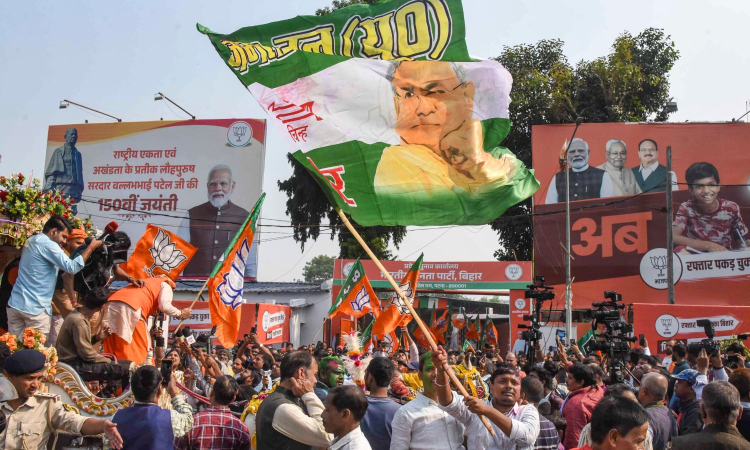NDA’s mysterious magic potion
In several state elections in the past two years (Madhya Pradesh 2023, Haryana 2024, and Maharashtra 2024), BJP-led ruling alliances bucked anti-incumbency to not just return to power but also get record-breaking majorities.

Representative Image (PTI)
Going by the pattern of Assembly elections north of the Vindhyas in the past two years, we should not be surprised by the National Democratic Alliance’s (NDA’s) landslide victory in Bihar. In several state elections in the past two years (Madhya Pradesh 2023, Haryana 2024, and Maharashtra 2024), BJP-led ruling alliances bucked anti-incumbency to not just return to power but also get record-breaking majorities. Whatever the potion concocted by M/s Shah and Modi, it seems to make voters forget all their complaints against the government.
Yet, despite those precedents, the sheer scale of the verdict in the Bihar Assembly election is staggering. When the last vote is counted, the NDA will very likely end up with a tally well above 200 in the Assembly of 243 and top the high mark of 206 it set in 2010. The competition, if any, was between the allies, the BJP and JD(U). The former has emerged as the single largest party in the Assembly for the first time, and the latter ran a decent second, vastly improving its tally of 46 in 2020. Even junior partners Lok Jan Shakti Party (RV), Hindustani Awam Morcha (Secular) and Rashtriya Lok Morcha have wildly exceeded expectations.
On the Mahagathbandhan side, the misery is equal for the Rashtriya Janata Dal (RJD) and the Congress. One has slipped from being the single largest party to a tally lower than 30, and the other has been cut down to its true size of 5. Even the AIMIM, a Hyderabad-based party that often offers its vote-splitting services to the BJP, has done better, winning all five seats it contested in the Seemanchal region.
However, despite this handsome victory and others before it, the taint of an unfair contest will remain on the NDA. Not only did it enjoy all the advantages vested in ruling parties — money power, misuse of official machinery, unequal media coverage — it also benefited from a partisan referee. While closer examination will only be possible when, and if, the Election Commission makes granular data available, the Special Intensive Revision (SIR) of voter rolls, implemented in a slapdash manner before the election, scrubbed a million voters from the list, mainly from marginalised communities.
As in Madhya Pradesh and Maharashtra, the referee looked the other way when the ruling party government made direct cash payouts of Rs 10,000 each to over 1.3 crore women just ahead of the election notification. Whether or not this was instrumental in boosting the voting percentage of women will be known in the weeks ahead, but it could well be the sort of pre-fabricated alibi we were proffered after the BJP's unexpected victories in the Madhya Pradesh and Maharashtra elections earlier.
However, just as defeat will raise questions over the viability of the INDIA alliance, victory will bring challenges to the winning side. While the BJP, as the single largest party at last, will now want to exert its full strength, Nitish Kumar will not just fade away, as was expected. The surprisingly strong showing by his party, the JD(U), and his own enduring popularity will make him an assertive ally, not the self-effacing minion he was in the current term. With the anti-federalist BJP preferring nonentities ruling the states, much will depend on how the allies redefine their equation now.



